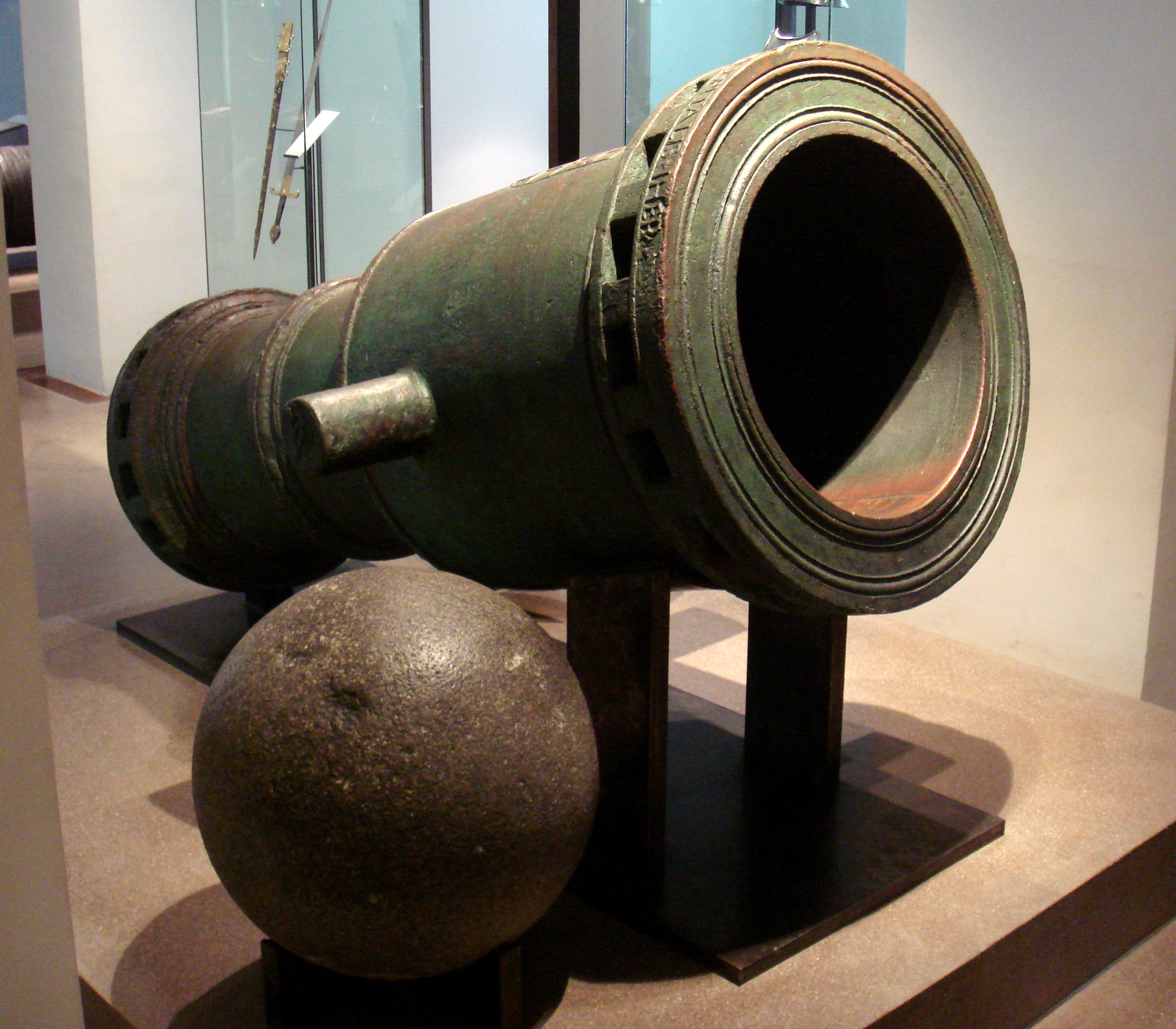Faule Grete on:
[Wikipedia]
[Google]
[Amazon]
 The Faule Grete ( German for ''Lazy Grete'', alluding to the lack of mobility and slow rate of fire of such super-sized cannon) was a
The Faule Grete ( German for ''Lazy Grete'', alluding to the lack of mobility and slow rate of fire of such super-sized cannon) was a
 The Faule Grete ( German for ''Lazy Grete'', alluding to the lack of mobility and slow rate of fire of such super-sized cannon) was a
The Faule Grete ( German for ''Lazy Grete'', alluding to the lack of mobility and slow rate of fire of such super-sized cannon) was a medieval
In the history of Europe, the Middle Ages or medieval period lasted approximately from the late 5th to the late 15th centuries, similar to the post-classical period of global history. It began with the fall of the Western Roman Empire ...
large-calibre cannon of the Teutonic Order
The Order of Brothers of the German House of Saint Mary in Jerusalem, commonly known as the Teutonic Order, is a Catholic religious institution founded as a military society in Acre, Kingdom of Jerusalem. It was formed to aid Christians on ...
. The bronze bombard __NOTOC__
Bombard may refer to the act of carrying out a bombardment. It may also refer to:
Individuals
*Alain Bombard (1924–2005), French biologist, physician and politician; known for crossing the Atlantic on a small boat with no water or food
...
was cast in 1409 in the cannon foundry of the Marienburg by the gunfounder Heynrich Dumechen. According to the account books of the order, the construction costs amounted to 278.5 Mark, a sum equivalent to ca. 1160 oxen.
Borrowed by Margrave Frederick I Frederick I may refer to:
* Frederick of Utrecht or Frederick I (815/16–834/38), Bishop of Utrecht.
* Frederick I, Duke of Upper Lorraine (942–978)
* Frederick I, Duke of Swabia (1050–1105)
* Frederick I, Count of Zoll ...
of Brandenburg
Brandenburg (; nds, Brannenborg; dsb, Bramborska ) is a state in the northeast of Germany bordering the states of Mecklenburg-Vorpommern, Lower Saxony, Saxony-Anhalt, and Saxony, as well as the country of Poland. With an area of 29,480 sq ...
in 1413, the cannon was instrumental in breaking the opposition of the domestic knighthood within three weeks, allowing Fredrick to lay the foundation for the rise of his Hohenzollern dynasty which later came to rule Prussia
Prussia, , Old Prussian: ''Prūsa'' or ''Prūsija'' was a German state on the southeast coast of the Baltic Sea. It formed the German Empire under Prussian rule when it united the German states in 1871. It was ''de facto'' dissolved by an ...
and the Deutsches Reich.
Besides the Faule Grete, a number of 15th-century European large-calibre weapons are known to have been employed primarily in siege warfare, including the wrought-iron Pumhart von Steyr
The Pumhart von Steyr is a medieval large-calibre cannon from Styria, Austria, and the largest known wrought-iron bombard by caliber. It weighs around 8 tons and has a length of more than 2.5 meters. It was produced in the early 15th century an ...
, Dulle Griet
The Dulle Griet ("Mad Meg", named after the Flemish folklore figure Dull Gret) is a medieval large-calibre gun founded in Gent (Ghent).
History
Three cannons were founded: one resides now in Edinburgh and is called "Mons Meg", and the last ...
and Mons Meg
Mons Meg is a medieval bombard in the collection of the Royal Armouries, on loan to Historic Scotland and located at Edinburgh Castle in Scotland. It has a barrel diameter of making it one of the largest cannons in the world by calibre.
...
as well as the cast-bronze Grose Bochse The Grose Bochse (old German for ''Große Büchse'', "Big Gun") was a medieval large-calibre cannon of the Teutonic Order. It was cast from June to September 1408 in several pieces and was presumably assembled by a screw or plug connection. The can ...
(also made by the Teutonic Knights) and Faule Mette.
__NOTOC__Footnotes
See also
*List of the largest cannon by caliber
The list of cannon by caliber contains all types of cannon through the ages listed in decreasing caliber size. For the purpose of this list, the development of large-calibre artillery can be divided into three periods, based on the kind of projec ...
References
* {{Artillery of the Middle Ages Large-calibre artillery Military history of the Teutonic Order Individual cannons Medieval artillery